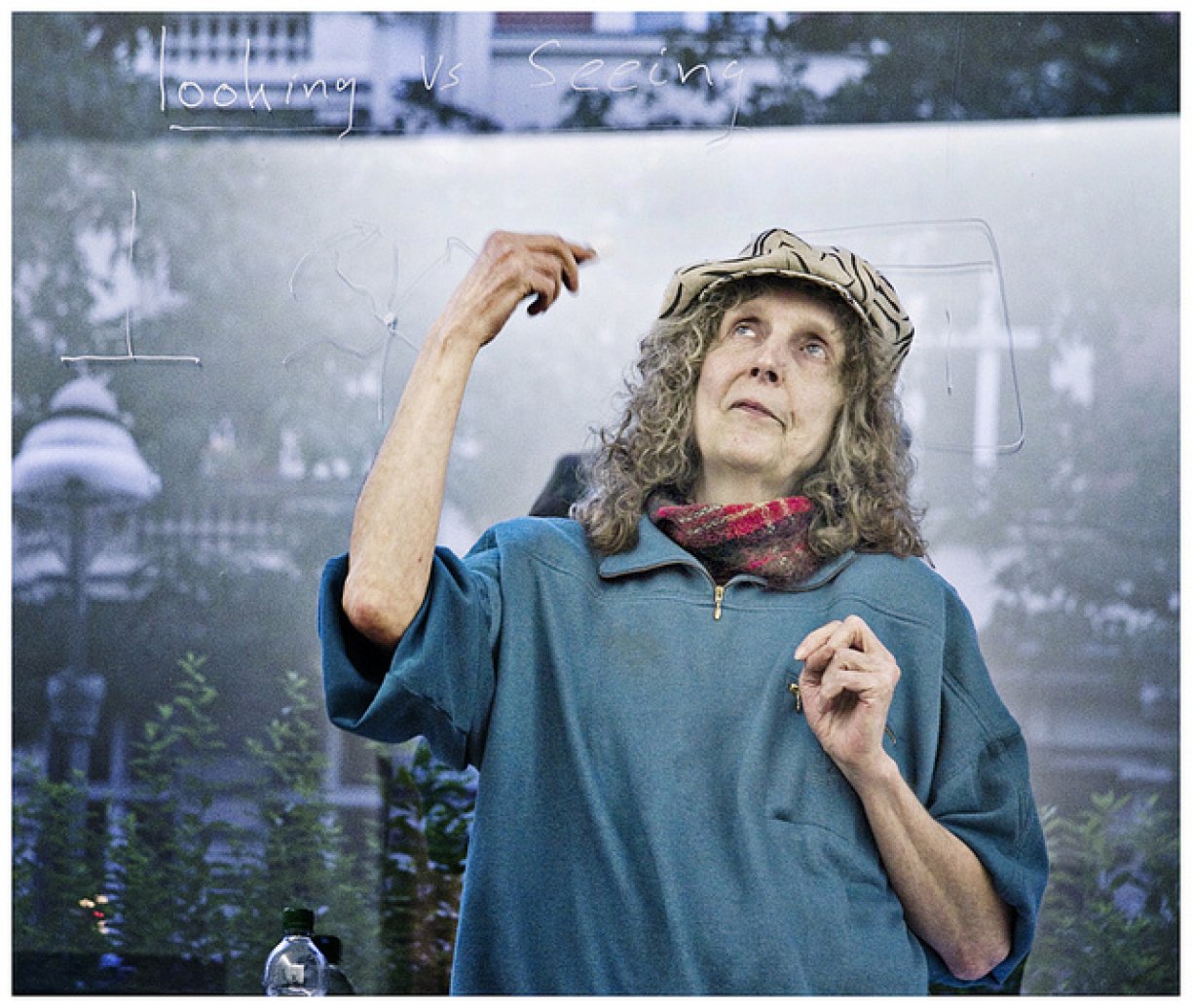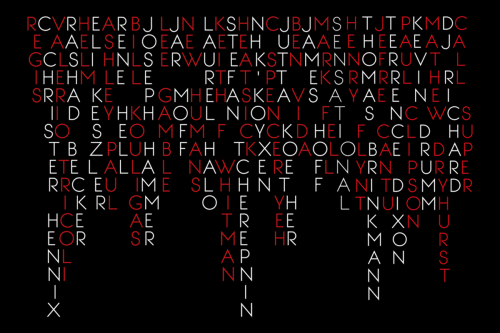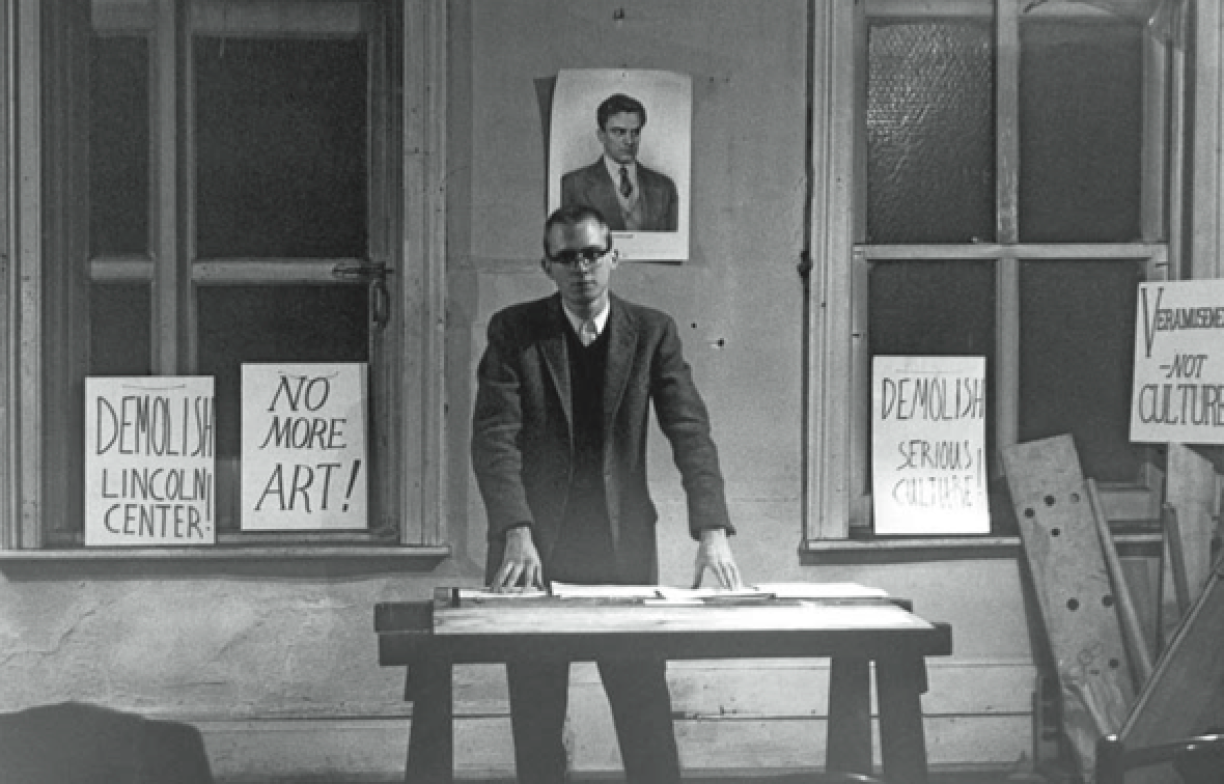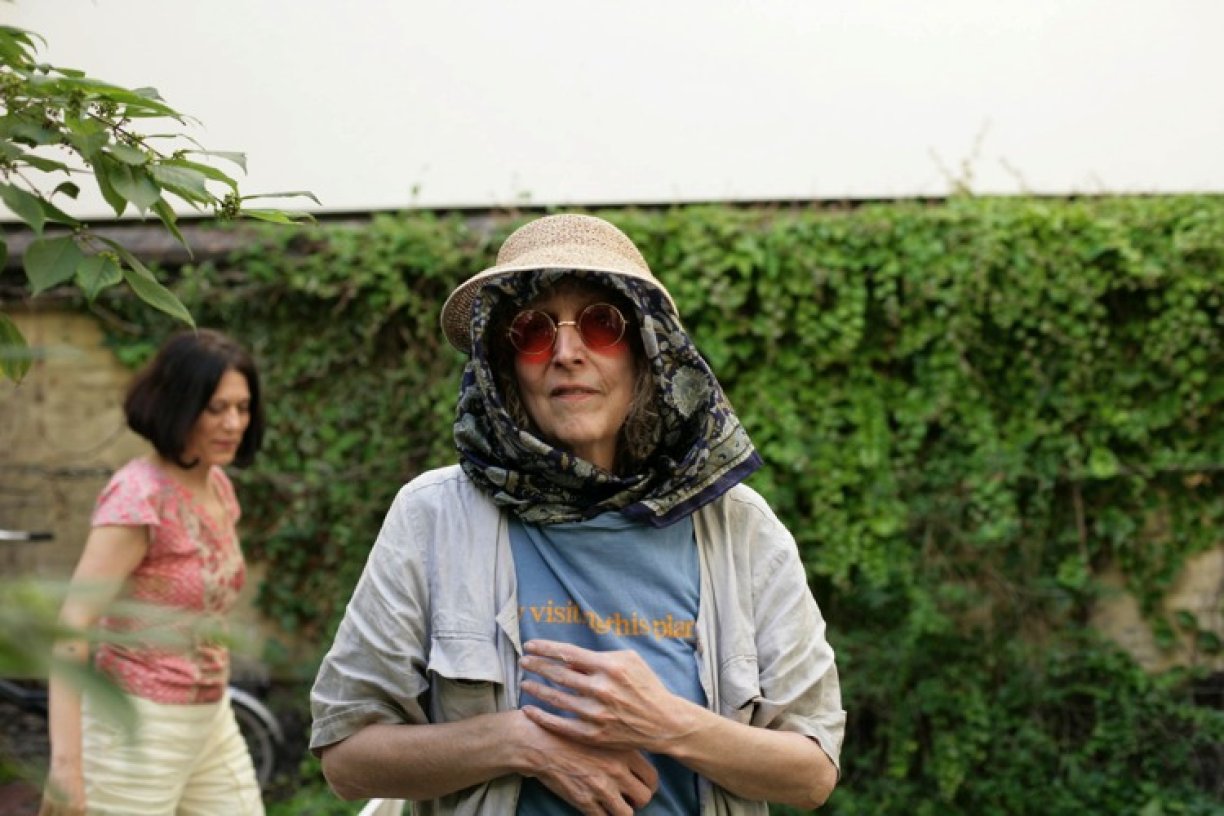ISSUE Project Room and Goethe-Institut New York’s June PAN_ACT festival opens on Friday June 14th at 7pm with “The Illuminitory Sound Environment”, a six-day sound installation including works by Catherine Christer Hennix and Henry Flynt, presented daily at ISSUE’s 22 Boerum Place theater through Wednesday, June 19th.
The centerpiece of the installation is the World Premiere of Rag Infinity/Rag Cosmosis, a new four-channel work by Swedish-American composer, philosopher, scientist, and visual artist Catherine Christer Hennix. Initially realized in a "beta-version" for Flynt's 2012 retrospective at ZKM in Karlsruhe, Germany, the piece is presented here in its fully realized version. Hennix' first 4-channel computer assisted composition since 1969, Rag Infinity/Rag Cosmosis is her most complex composition since her recent return to the avant-garde music scene, presenting fragments of raga-like frequency constellations which follow distinct cycles and permute their order to create a simultaneity of "multi-universes”.
The installation at ISSUE also includes Henry Flynt’s Celestial Power (1979) and Glissando No. 1 (1979), two works that marked the inaugural realization of the "Illuminatory Sound Environment" in 1979 at the Kitchen, as a joint manifestation by Flynt and Hennix. (Flynt works are not on view during the opening, see hours below.)
Catherine Christer Hennix: Rag Infinity/Rag Cosmosis (1976 - 2013)
Opening Event: Friday June 14th, 7pm-10pm
Saturday, June 15th , 12pm-6pm
Sunday, June 16th, 12pm-10pm
Monday, June 17th, 4pm-10pm
Tuesday, June 18th, 12pm-10pm
Wednesday, June 19th 12pm-10pm
Henry Flynt: Celestial Power (1979)
Saturday, June 15th , 6pm-10pm
Henry Flynt: Glissando No. 1 (1979)
Monday, June 17th, 12pm-4pm
The "Illuminatory Sound Environment" (ISE) concept was originally conceived by Henry Flynt in 1978 in response to Hennix' 1976 work "The Electric Harpsichord". ISE refers to a psychotropically working sonic agency which transports the listener to an alternate state of mind, the portals to which are closed without the sound as guide and input. ISE employs continuous and frequently cyclic sounds, with all pitches fixed in accordance with standards of just intonation, intended to increase the listening subject's receptivity, and provide portals to hitherto unvisited and unmapped sonically mediated sites and regions of mind.
Catherine Christer Hennix (C.C. Hennix) is a Berlin-based Swedish-American composer, philosopher, scientist, and visual artist associated with drone minimal music. Hennix was affiliated with MIT's AI Lab in the late 1970s and was later employed as research professor of mathematics at SUNY New Paltz. Hennix met La Monte Young and Hindustani raga master Pandit Pran Nath at the Nuits du Fondation Maeght festival in 1970 and pursued studies with both men during the 1970s.
In the '70s Hennix led the just intonation live-electronic ensembles Hilbert Hotel and The Deontic Miracle. In 1978 Henry Flynt formulated what, subsequently, became known as the concept of an Illuminatory Sound Environment (ISE) on the basis of Hennix' performance of The Electric Harpsichord at the Moderna Museet in Stockholm,1976. ISE was first realized in 1979 at the Kitchen, New York, as a joint manifestation by Flynt and Hennix. For the next 20 years Hennix devoted much of her time to mathematical research at the insistence of her late Nada Guru, Sri Faquir Pandit Pran Nath, serving as a professor of mathematics and computer science and assistant to and coauthor with A.S. Yessenin-Volpin for which she was given the Centenary Prize-fellow Award by the Clay Mathematics Institute, Cambridge, USA. In 2003 she returned to computer generated composite sound wave forms now called Soliton(e)s of which Soliton(e) Star was the first result. Subsequently she formed the just intonation ensemble The Choras(s)an Time-Court Mirage which performs Blues Dhikir al- Salam.
Henry Flynt was born in 1940 in Greensboro, NC. He is a philosopher, musician, anti-art activist and exhibited artist. Flynt’s work devolves from what he calls “cognitive nihilism,” first announced in the 1960 and 1961 drafts of Philosophy Proper. He refined these dispensations in the “Is there language?” trap, published as “Primary Study” in 1964. In 1961, Flynt coined the term concept art. Concept art’s first appearance in a book was in An Anthology, release date 1963. In 1962, Flynt began to campaign for an anti-art position. He demonstrated against cultural institutions in New York in 1963 with Tony Conrad and Jack Smith, and against Stockhausen twice in 1964. He wanted art to be superseded by “veramusement” and “brend,” neologisms meaning approximately pure recreation.
From about 1980, Flynt has given a great deal of time to two endeavors which did not achieve the notoriety of the early actions—"meta-technology" and "personhood theory." In 1987, he revived concept art for tactical reasons; he spent seven years in the art world. After that, Flynt began to publish recorded but unreleased musical compositions; over a dozen CDs have appeared in recent years. Because of his friendship and collaboration with George Maciunas, Flynt sometimes gets linked to Fluxus by unsympathetic reviewers.









